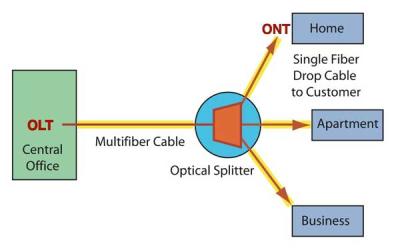Broadband rollouts are booming across the globe as operators race to provide more coverage and faster internet speeds for consumers. Many have hyped-up plans to deploy either fresh or upgraded fiber broadband technology. But what is fiber broadband, and what does it have to offer consumers?
Starting with the basics, fiber networks are comprised of bundles of hair-thin strands of glass which conduct pulses of light (spectrum) to transmit data. These bundles are wrapped into cables, which can be run either underground in small pipes called conduit or strung on poles in what are known as aerial deployments.

Many times when operators talk about their broadband plans, they mention terms like fiber-to-the-home (FTTH) or fiber-to-the-premises (FTTP). All networks use fiber for some portion of their infrastructure, and these terms simply denote how close to the end user that fiber runs. So, while a cable network might run fiber to the edge of a neighborhood and then use hybrid fiber coaxial (HFC) cable to bridge the gap from there to each home, a fiber-to-the-home architecture means that the network uses only fiber all the way from where the signals originate to the side of each house.
Fiber Broadband Association CEO Gary Bolton told Fierce Telecom that fiber networks use passive optical networking (PON). That means there are no active, powered components in the network aside from the laser at the end of the strands, which sends the aforementioned light signals across the glass.
There are a variety of PON standards put out by the IEEE and ITU, which offer a range of speed capabilities. Commonly referenced versions include GPON, XGS-PON, 25G-PON and NG-PON 2. GPON enables download speeds of up to 2.5 Gbps and upload rates of up to 1.25 Gbps. Meanwhile, XGS-PON and 25G-PON offer symmetric 10 Gbps and 25 Gbps speeds, respectively. NG-PON2, which has notably been employed by Verizon for its Fios network, enables speeds of up to 40 Gbps. Looking ahead, additional options could enable speeds of 50-100 Gbps or more.
“We’ll be getting into terabits and beyond in no time,” Bolton said. “You already have all the spectrum so really it’s just as we develop lasers with narrower beams…In the big optical [transport] networks they already do terabit over fiber so it’s really taking those technologies and downsizing them for residential use.”